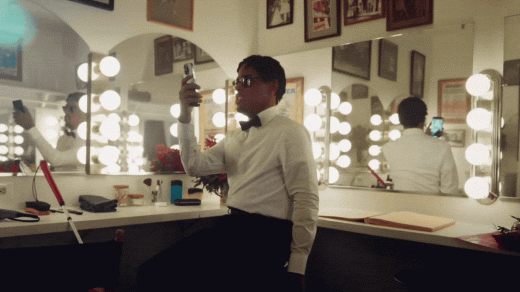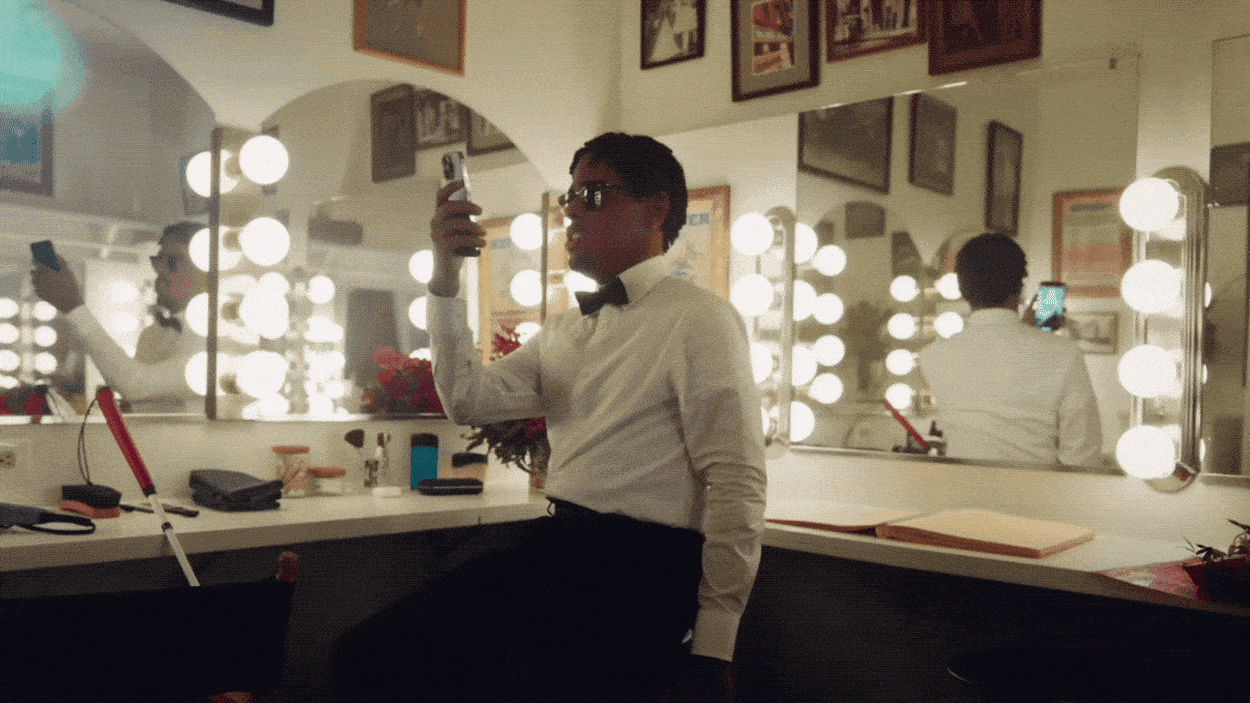Accessible tech design has the power to change lives—why is it so often ignored?
In Apple’s latest ad we see musicians, students, artists, cheerleaders, parents all living their lives. What do they all have in common? They’re using assistive technology features.
We see a visually impaired musician in the ad getting ready for a performance. He holds his phone up to scan the dressing room: “a painting, a red jacket” Siri responds as objects are registered. Later in the spot, the musician, slick in his red jacket, is walking to the stage, guide cane in one hand, phone in the other, with Siri leading the way: Two doors detected. Text: To stage. Door 4 feet away. We watch as computer vision recognizes objects, optical character recognition reads signage, LiDAR proximity maps to accurately judge distance—all happening in real time. The result of all of this advanced tech for the musician is simple: independence.
The ad is an important reminder of the power of technology and accessible design in transforming lives.
1928 was the first time technology spoke. Homer Dudley, an inventor at Bell Labs, created the Vocoder. The device transmitted and translated electronic signals into a harsh robotic voice. For the 284 million people globally who the World Health Organization estimates live with a form of visual impairment, Dudley’s invention was the first of many that has helped enable them to lead an independent life today.
In just shy of a century since Dudley’s Vocoder repeated its input through its dulcet robotic tones, we’ve progressed to an age in which synthesized voice is nearly indistinguishable from human speech, computer vision can see and understand the world around us, and as more of our physical world is connected, technology can manipulate our environment through simple gestures and commands.
The promise of new technology has always been to enhance our abilities as humans. What cannot be forgotten is that each and every human is different. Humanity after all is plural. Written in the caption beneath Apple’s ad on YouTube: “Accessibility is a human right.” The U.S. Congress that passed the American Disability Act (ADA), in 1990, and the European Parliament that passed the European Accessibility Act (EAA), in 2019, would clearly agree.
But for all the brilliance of Apple’s ad, it’s important to recognize that the world is far from an easily accessible place. And that goes as much for the digital world as the physical. In just one year, ADA lawsuits increased by 181% to over 2,000 cases, a number that is expected to rise year on year. In the latest accessibility report by U.S. charity WebAIM, 96.8% of tested homepages had automatically detectable accessibility failures. These are staggering statistics that highlight the scale of change needed for a more accessible web, just for starters.
Designers, developers, product owners, and business leaders alike are responsible for building accessibility into every part of our work. It’s no longer optional or a “nice to have” feature; it’s a legal requirement. But the threat of legal action shouldn’t be the motivation to change. If products and experiences aren’t designed to be inclusive from the start, they’ll always be exclusionary at the end.
Over one billion people globally live with some form of disability; and with an aging population, that number is only increasing. Accessible design, therefore, has never been more important. Integrating and ensuring compatibility with accessibility features at an operating-system level should be table stakes. Digital experiences need to be built to provide options to users, allowing them to interact through whatever means suits them best, whether through screen-reader and voice, keyboard or touch. This ultimately is the magic of digital as a medium; it can flex and change as needed. All it needs are the ideas to drive the change.
One example is a recent collaboration between the Royal National Institute of Blind People, Google, R/GA London, and The Guardian, which set out to create an editorial experience optimized for accessibility. The result was Auditorial—an experience that can be configured in 22 different ways, from changing font size and color combinations to suit photo-sensitive users to audio versions for low-vision users and video controls for motion-sensitive users. This isn’t to say each state was individually designed; instead, the experience highlights the power of an adaptable design system defined with diverse needs in mind.
We’ve come a long way since Homer Dudley translated those electrical signals into speech; we’ve breathed life into and awakened technology, allowing it to see, think, and speak. It’s time for us to harness its power and innovate with accessibility, front and center of mind, in everything we make. This is an exciting time for anyone involved in designing, developing, and deploying products and services; our tool kit has never been more powerful. Let’s use the power for the betterment of everyone.
Kyle Wheeler is a group creative director at R/GA.
(17)



